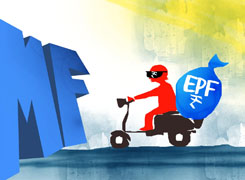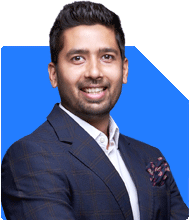Should I use my EPF for my daughter's education or continue investing in mutual funds?

I’m 42 years old, married, with one daughter aged 12. I live in Goa. I’m considering using my EPF for my daughter’s higher education. Should I use this or continue investing in mutual funds for better returns?
1. EPF:
Pros:
• Safe and guaranteed returns: EPF currently offers an interest rate of around 8-8.5%, which is relatively high for a low-risk investment.
• Tax benefits: EPF withdrawals after 5 years of continuous service are tax-free, including the interest earned.
Cons:
• Moderate growth: While safe, the returns may not be as high as equity mutual funds over the long term.
• Compromising retirement funds: Using EPF for education could deplete your retirement savings, making it difficult to maintain financial security in your later years.
2. Mutual Funds:
Pros:
• Higher potential returns: Over a 5-6 year horizon, a well-diversified mutual fund portfolio (especially balanced or equity funds) could offer better returns, typically in the range of 10-12%.
• Flexibility: You can tailor your investments based on your risk tolerance (e.g., shift from equity to more conservative debt funds as the education expenses approach).
Cons:
• Market risk: Mutual funds are subject to market volatility, which could lead to fluctuations in your investment value, especially in the short term.
• Capital gains tax: Equity investments held for less than a year are taxed at 15%, and long-term capital gains exceeding Rs 1 lakh are taxed at 10%.
What you can do:
• Maintain your EPF for retirement: Since EPF is a safe retirement corpus, it’s advisable to avoid using it for non-retirement purposes unless absolutely necessary.
• Continue with mutual fund investments: Given the time horizon of 5-6 years, you can continue investing in mutual funds, especially in a mix of equity and hybrid funds. As the time nears, gradually move towards safer debt or balanced funds to reduce risk.
• Consider a targeted education fund: You could start a dedicated mutual fund or a systematic investment plan (SIP) specifically for your daughter's education, while keeping your EPF intact for retirement.
This balanced approach can help you fund education without compromising your retirement security.
You may like to see similar questions and answers below
Vivek Lala |323 Answers |Ask -Follow
Tax, MF Expert - Answered on Mar 12, 2024
Ulhas Joshi |280 Answers |Ask -Follow
Mutual Fund Expert - Answered on Jul 26, 2023
Kirtan A Shah | Answer |Ask -Follow
MF Expert, Financial Planner - Answered on Nov 13, 2023
Ramalingam Kalirajan |10924 Answers |Ask -Follow
Mutual Funds, Financial Planning Expert - Answered on Jul 22, 2024
Dr Dipankar Dutta |1842 Answers |Ask -Follow
Tech Careers and Skill Development Expert - Answered on Dec 23, 2025
Mayank Chandel |2580 Answers |Ask -Follow
IIT-JEE, NEET-UG, SAT, CLAT, CA, CS Exam Expert - Answered on Dec 23, 2025
Mayank Chandel |2580 Answers |Ask -Follow
IIT-JEE, NEET-UG, SAT, CLAT, CA, CS Exam Expert - Answered on Dec 23, 2025
Mayank Chandel |2580 Answers |Ask -Follow
IIT-JEE, NEET-UG, SAT, CLAT, CA, CS Exam Expert - Answered on Dec 23, 2025
Mayank Chandel |2580 Answers |Ask -Follow
IIT-JEE, NEET-UG, SAT, CLAT, CA, CS Exam Expert - Answered on Dec 23, 2025
Radheshyam Zanwar |6755 Answers |Ask -Follow
MHT-CET, IIT-JEE, NEET-UG Expert - Answered on Dec 23, 2025
Radheshyam Zanwar |6755 Answers |Ask -Follow
MHT-CET, IIT-JEE, NEET-UG Expert - Answered on Dec 23, 2025
Purshotam Lal |70 Answers |Ask -Follow
Financial Planner, MF and Insurance Expert - Answered on Dec 23, 2025
Purshotam Lal |70 Answers |Ask -Follow
Financial Planner, MF and Insurance Expert - Answered on Dec 23, 2025
Samraat Jadhav |2522 Answers |Ask -Follow
Stock Market Expert - Answered on Dec 23, 2025





























